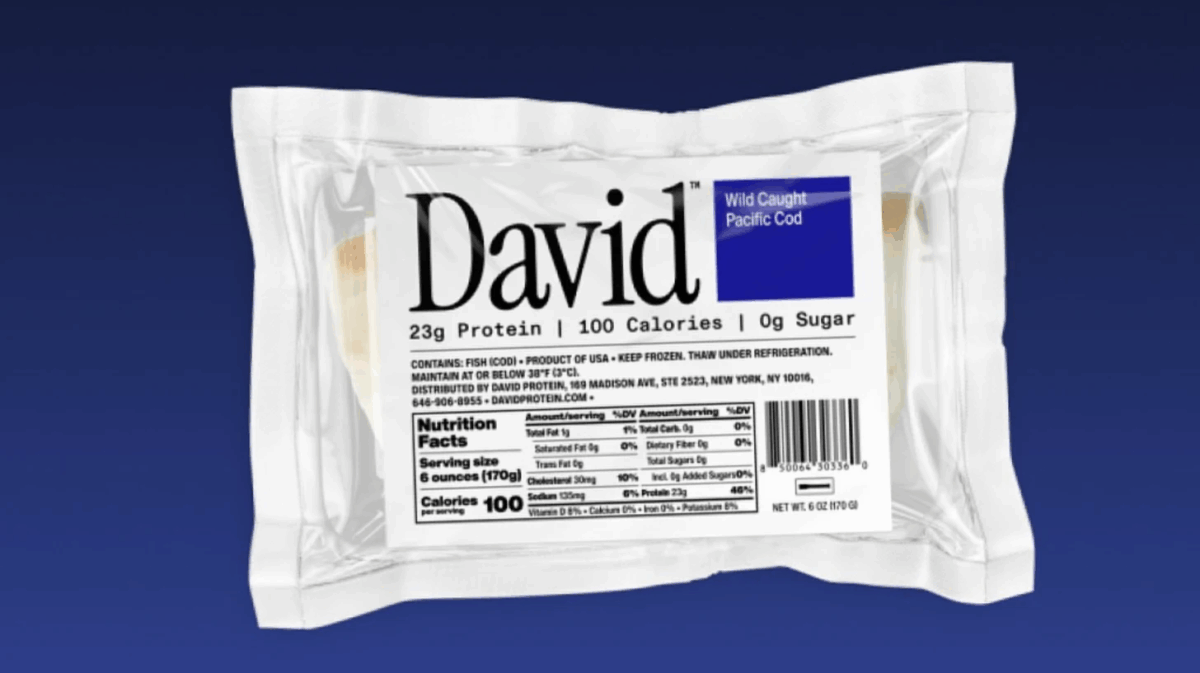When David Protein launched frozen cod fillets for $55 per four-pack, the internet lost its mind. Comments ranged from “Had to check my calendar, thought it was April 1st” to complete confusion about why a protein bar company was selling raw fish.
But while everyone was laughing at the absurdity, David was executing one of the smartest marketing strategies of the year, and most founders completely missed the genius behind it.

The Real Strategy Behind the Stunt
This wasn’t a product launch. This was a comparison anchor wrapped in viral marketing, disguised as a business line extension.
David’s cod offers 23 grams of protein and 100 calories, while their protein bars offer 28 grams of protein and 150 calories. But the real magic isn’t in the numbers, it’s in the psychology.
When customers see that David’s bars contain more protein per calorie than raw cod, the bars suddenly transform from “expensive processed snack” to “convenient miracle food.” The cod doesn’t need to be profitable; it needs to make the bars look like the obvious choice.
Marketing Spend vs. Marketing Genius
Traditional protein brands spend millions on influencer partnerships and paid ads to communicate their value proposition. David spent whatever it cost to source, package, and ship cod to create a comparison that does the selling for them.
In its first week, the cod campaign helped spur a 1,000 percent increase in engagement on Instagram, 14,000 percent increase on X, and 1,100 percent increase on LinkedIn.
What would that level of engagement cost through traditional advertising? David got it by launching a product designed not to drive revenue, but to drive home their core message: we make the most protein-dense convenient food possible.
The Customer Psychology Masterclass
Most protein brands focus on convenience: “grab our bar when you’re busy.” David took a different approach, they focused on protein optimization as a lifestyle.
Their customer isn’t looking for a quick snack. They’re someone who tracks macros, optimizes nutrition, and thinks about protein intake throughout the day. David likes to boast that its bars contain the most calories from protein (CFP, the company’s favored metric) of any protein bar on the market, at 150 calories for 28 grams of protein.
The cod launch reinforces this positioning perfectly. It says: “If you’re serious enough about protein to consider eating plain boiled cod, here’s something that gives you more protein with actual flavor and convenience.”
The Retail Validation Move
The genius gets even smarter when you consider the retail play. David has teamed up with New York-based specialty grocer Happier Grocery, where the cod fillets are now available in-store at $52.49.
This retail placement transforms what could look like a publicity stunt into a legitimate product line. When Happier Grocery, a health-focused retailer known for curated, better-for-you items, stocks your cod, it validates the strategy as real business, not just marketing theater.
The retail partnership also creates a physical touchpoint where customers can see the comparison firsthand: cod in the freezer section, bars at checkout, with clear protein comparisons on both packages.
The Loss Leader Framework
This is loss leader strategy at its most sophisticated. David isn’t trying to build a seafood empire. They’re using cod as a marketing vehicle that:
- Creates a powerful comparison anchor – Makes bars look convenient and superior
- Generates massive organic reach – 14,000% increase in X engagement vs. paid ad costs
- Reinforces brand positioning – Protein optimization, not just convenient snacking
- Builds retail credibility – Legitimate product placement validates the strategy
- Keeps customers thinking about protein – Beyond just grab-and-go moments
What Founders Can Learn
Create Your Own Comparison Anchors: What’s the most extreme version of what your product does? David’s bars are convenient protein; cod is inconvenient protein. The comparison makes convenience feel like a bonus, not a compromise.
Design Products as Marketing Vehicles Not every product needs to drive profit. Some products can exist purely to communicate your value proposition more effectively than traditional advertising.
Know Your Customer’s Real Motivation David understood their customer isn’t motivated by convenience alone, they’re motivated by protein optimization. Build marketing around the deeper psychological driver.
Use Retail to Validate Unconventional Strategies Getting Happier Grocery to stock cod transforms a potential stunt into a legitimate business move. Retail validation can make bold strategies feel more credible.
Calculate Marketing ROI Differently Instead of asking “Will this product be profitable?” ask “Will this product generate more brand value than traditional marketing spend?” David’s engagement numbers suggest the answer is yes.
The Broader Lesson
Peter Rahal, who sold his previous company RxBar to Kellogg for $600 million, says “Good branding is fundamentally polarizing. It strikes an emotion similar to good art.”
In a world where every protein brand launches new flavors and fights for influencer attention, David launched fish. They understood that standing out requires doing something completely different, even if it seems absurd at first glance.
The cod strategy works because they’re creating an unforgettable way to communicate their bars’ superiority. While competitors spend on traditional marketing to explain their value proposition, David created a product that makes their value proposition impossible to miss.
Thanks for reading this week,
Camille xx
P.S. The exact framework I use for branding and social media is now available for download in my Masterclass!